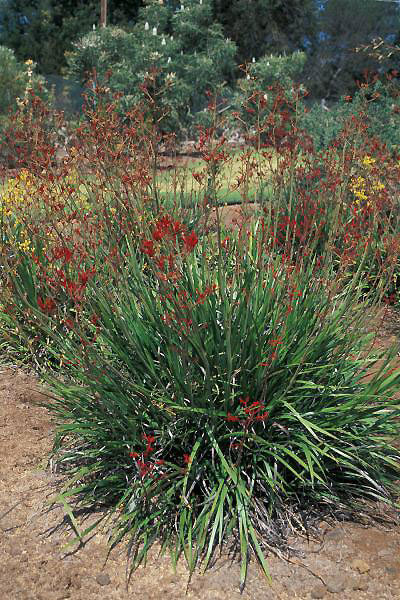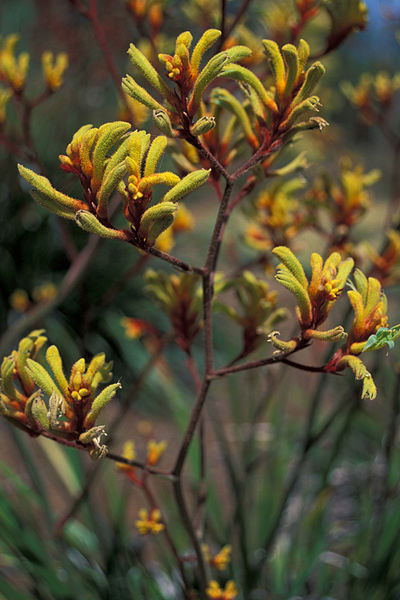
Endemic to southwestern Australia, this tender herbaceous perennial is a member of the bloodwort family, Haemodoraceae, a plant family found primarily in the Southern Hemisphere. The plants grow from a short rhizome and form a basal rosette of linear, medium green, leaves that are arching and up to 3′ long. Beginning in spring, leafless stalks 4-6′ tall bear panicles of tubular flowers buds covered with colored hairs that may be greenish-yellow or pinkish-red. The buds look like monkeys paws and give rise to the common name. The tip of the flower buds flare open revealing 6 petals and attract honey possums and nectar-feeding birds like humming birds. Many species and hybrids of kangaroo paw are available that vary most significantly in height and flower color but also in hardiness and longevity. Tall kangaroo paw can be expected to provide flowers for up to 5 years and is an excellent choice for beds and borders in frost free climates or as a potted plant that is wintered indoors in cooler climates. The flowers are long lasting in the vase. The genus name, Anigozanthos, comes from the Greek words anoigo meaning to open, and anthos meaning flower and refers to the flare of the flower petals as they open. The specific epithet, flavidus, is the Latin word meaning yellow and refers to the most common flower color.

Type: Tender herbaceous perennial
Bloom: Hairy, greenish yellow or pinkish red tubular flower buds that open with a flared tip from late spring to fall if deadheaded
Size: 3-6′ H x 2-4′ W
Light: Full sun, tolerates some shade
Soil: Average, medium moist in flowering season, dry when dormant, well-drained
Hardiness: Zones 10-11
Care: Deadhead to prolong bloom time.
Pests and Diseases: None of significance but susceptible to ink spot, powdery mildew, and aphids.
Propagation: Seed, division
Companion Plants: Blue chalksticks, agave, blue fescue, California poppy
Outstanding Selections: Many hybrids available
Photo Credit: Forest & Kim Starr Wikipedia